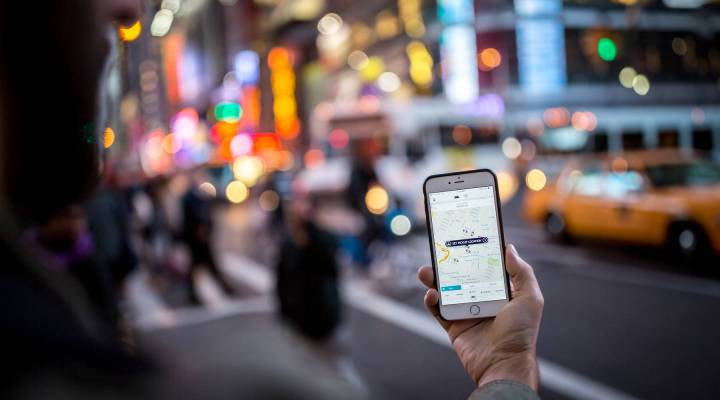
New York stopping Uber and Lyft in their tracks for a year
New York stopping Uber and Lyft in their tracks for a year

The New York City Council has banned new permits for Uber and Lyft-style cars in New York City for a year. It’s the first city to do this at a time when these Silicon Valley disruptors are seen to be disrupting traffic and disrupting the lives of traditional yellow taxi and limo drivers.
The city council has also cleared the way to require Lyft and Uber to top up drivers’ salaries if they don’t meet the minimum wage.
Ryan Felton, a senior reporter for Jalopnik, which covers all things automotive and transportation, joined us to discuss congestion, drivers’ economic conditions and what the companies themselves had to say.
There have been studies coming out on many sides of this issue. Is there clarity now on whether the Ubers and Lyfts of the world make congestion in cities worse?
It’s kind of a tricky question because I think people are right to say that there’s a ton of different elements at play, but New York City’s seen tens of thousands of more drivers working for these services in the last several years. And you add tens of thousands of cars on the road, that’s going to create some level of congestion.
Manhattan in particular has seen, in that same timeframe, its average driving speed has gone down a few miles per hour, which already makes slow moving traffic even more of a terrible experience for a lot of people.
In some cities Uber and Lyft may replace people’s cars, but if they compete with public transportation, you get this addition to congestion?
I know there’s been another recent study in Boston and I know that found it’s been more congestion as a result. I know San Francisco’s also been scrutinizing this really hard — in other cities it could serve as just a vehicles that is being replaced.
What do we know about the economic conditions for people who drive for Lyft and Uber?
What caused a lot of the recent criticism and backlash in New York City in particular has been a string of suicides involving drivers who had very intense emotional experiences dealing, trying to grapple with serious amounts of debt that they had taken on to work full time as taxi drivers or black car drivers. And you know, over time, within months you saw that there was more and more people speaking out and more and more people dying. That’s what I think has really kind of brought [New York City] to the point where it was considering a vote to cap cars for a year.
Uber and Lyft would point out that they provide jobs to drivers.
There are people who drive for Uber and Lyft full time, and it is a way for them to pay bills if they’re needing work in-between jobs. The points that Uber and Lyft make — they make sense. But clearly, the status quo isn’t working out for everyone.
There’s a lot happening in the world. Through it all, Marketplace is here for you.
You rely on Marketplace to break down the world’s events and tell you how it affects you in a fact-based, approachable way. We rely on your financial support to keep making that possible.
Your donation today powers the independent journalism that you rely on. For just $5/month, you can help sustain Marketplace so we can keep reporting on the things that matter to you.


















